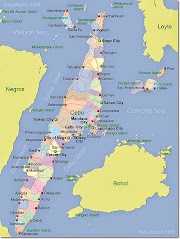The city of Makati, the Philippine's financial center, has been dubbed by TIME Magazine as the "Selfie Capital of the World."
"An examination of hundreds of thousands of selfies—the low-fi, self-shot photographs that are intensely popular among younger social media users—suggests that the city, part of metropolitan Manila and home to 500,000 people, produces more selfies per capita. than any other city in the world," TIME Magazine's Chris Wilson said.
The TIME study, which covered 459 cities and was built using a database of more than 400,000 Instagram photos tagged with the term "selfie"that also included geographic coordinates, revealed that Makati and Pasig cities have 258 selfie-takers per 100,000 people.
Cebu City also made it to the top 10, ranking 9th with 99 selfie-takers per 100,000 people.
Below is the top ten cities in the world which produce the most selfies:
1. Makati City and Pasig, Philippines
258 selfie-takers per 100,000 people
2. Manhattan, New York
202 selfie-takers per 100,000 people
3. Miami, Florida
155 selfie-takers per 100,000 people
4. Anaheim and Santa Ana, California
147 selfie-takers per 100,000 people
5. Petaling Jaya, Malaysia
141 selfie-takers per 100,000 people
6. Tel Aviv, Israel
139 selfie-takers per 100,000 people
7. Manchester, England
114 selfie-takers per 100,000 people
8. Milan, Italy
108 selfie-takers per 100,000 people
9. Cebu City, Philippines
99 selfie-takers per 100,000 people
10. George Town, Malaysia
95 selfie-takers per 100,000 people
Methodology
The TIME said the photos from which the list was based were downloaded from the Instagram API in two sets of five days, from January 28 to February 2, 2014 and March 3 to 7, 2014, with each day's data consisting "of the 24-hour period from midnight to midnight to account for all time zones equally."
The data consisted of 402,197 Instagram photos tagged "selfie" that included geographic coordinates. TIME noted that the data "only account for a fraction of all selfies uploaded during that time since the majority of photos do not include a location."
"For every city in the world of at least 250,000 residents, we then counted the number of selfies taken within 5 miles and divided by the population of that city," TIME said.
TIME said that while the metric of "people who take selfies per capita" is far from a perfect measure, "it was far and away the most comprehensive means of comparing the 459 world cities that turned up at least 25 individual users in the database."
Other than the penchant for selfies, TIME said smart phone adoption rates and median income are also considered factors.
"As such, this list tends to favor regions just outside major urban areas," TIME said.
TIME also noted that not all photos tagged with the term "selfie" were actual selfies, and that informal tests showed that vast majority of the photos were of a single person. There were also attempts to find international versions of the word "selfie," "but none of the suggested translations showed up in any appreciable volume."
In cases where cities near each other were combined on the list, TIME explained that photos were matched using the "nearest neighbor" algorithm that found the nearest city with at least 250,000 residents.
"This means that, even within the fairly tight radius of 5 miles from the center of a city, some photos are counted which were not physically taken in that city," TIME said.
"All of our tests suggested this was an acceptable tradeoff for the speed of this method of geocoding, which also serves to group the innermost suburbs with the city that they surround."
pinoyfavs.blogspot.com



.jpeg)



.jpeg)

0 Comments